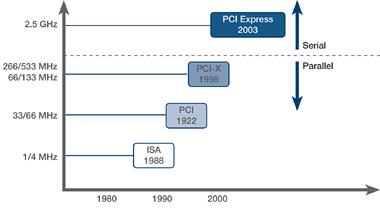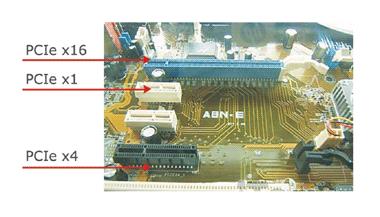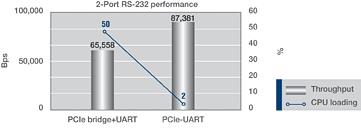-

- Sopto Home
-

- Special Topic
-

- PCI-E Card Knowledge
-

- What's driving the future of PCIe?
PCI-E Card Knowledge
- Info about Network Interface Card Teaming
- How to Setup a Server with Multiple Network Interface Adapters?
- How to Reconnect an Internet Network Adapter for an Acer Aspire?
- 9 Things to Do When Your Internal Network Card Stops Working
- Ethernet Standards NIC for Home Networking
- What Is a Network Interface Adapter?
- How to Configure a Network Interface Card in Linux?
- How should Configure Your NIC for ISA and TMG?
- Recommended Network Card Configuration for Forefront UAG Servers
SOPTO Special Topic
Certificate



Guarantee
Except products belongs to Bargain Shop section, all products are warranted by SOPTO only to purchasers for resale or for use in business or original equipment manufacturer, against defects in workmanship or materials under normal use (consumables, normal tear and wear excluded) for one year after date of purchase from SOPTO, unless otherwise stated...
Return Policies
Defective products will be accepted for exchange, at our discretion, within 14 days from receipt. Buyer might be requested to return the defective products to SOPTO for verification or authorized service location, as SOPTO designated, shipping costs prepaid. .....
Applications

PCI-E NIC Cards provide redundant connectivity to ensure an uninterrupted network connection.
PCI-E NIC Cards are ideal for VM environments with multiple operating systems, requiring shared or dedicated NICs.
They are specially designed for desktop PC clients, servers, and workstations with few PCI Express slots available.
SOPTO Products
- Fiber Optic Transceiver Module
- High Speed Cable
- Fiber Optical Cable
- Fiber Optical Patch Cords
- Splitter CWDM DWDM
- PON Solution
- FTTH Box ODF Closure
- PCI-E Network Card
- Network Cables
- Fiber Optical Adapter
- Fiber Optical Attenuator
- Fiber Media Converter
- PDH Multiplexers
- Protocol Converter
- Digital Video Multiplexer
- Fiber Optical Tools
- Compatible
Related Products
Performance Feature
PCI-E Card Knowledge
Recommended


What's driving the future of PCIe?
Since its 2003 debut, PCI Express (PCIe) has replaced PCI and PCI-X as the expansion interface of choice for consumer market PCs. Although the older PCI specifications are still commonly used in the industrial sector, PCIe is positioned to assume its intended role as the new industry-wide standard. But how exactly does PCIe differ from other "PCI" interfaces? Moreover, what recent innovations are contributing to the migration towards PCIe?
Back to the future
PCI Express is a high-speed point-to-point interconnection standard based on a serial interface. Serial transmission involves sending and receiving data one bit at a time, and has been around since the early days of computing. Although early serial connections were reliable, automation applications began to require higher transmission speeds. As a result, manufacturers switched to parallel connections, which allowed them to send all 8 bits of data for a single byte simultaneously rather than bit by bit. Before the development of PCI Express, all PC data buses used a standard parallel data bit design.
The first parallel protocol to become an industry-wide standard was ISA, which was superseded by PCI and PCI-X. Although ISA, PCI, and PCI-X are still in use today, data throughput rates of computer components are now faster than the data transfer rates offered by PCI, which peaks at 133 MB/s. Even though PCI-X transfer rates range from 512 MB/s to 1 GB/s depending on the specification, its parallel basis makes increasing bandwidth costly and susceptible to electromagnetic interference. The need to handle more bandwidth by today's technology has prompted the development of PCI Express and a return to highly-optimized serial connections.
Bus Transmission Speeds

One advantage of PCIe's serial architecture is its lower pin count compared to PCI and PCI-X. Upgrading parallel architecture to handle increased bandwidth would be very expensive since it requires increasing the number of pins and wires for data transmission. The more pin-efficient design of PCIe not only reduces manufacturing costs, but significantly reduces the number of traces that are required on the PCB as well, thus simplifying the routing of traces. Additionally, this architecture reduces electrical issues that limit the signaling rate of PCI and PCI-X.
- Support for multiple marker segments and emerging applications
- Cost-effective implementation and construction
- Compatibility with the PCI software model
- Superior performance and scalability
- Support for new modules
But how can a serial interface, which transmits data one bit at a time, be faster than a parallel interface? As it turns out, parallel connection wires can interfere with each other electromagnetically, leading to a problem called skew that slows down the transfer rate. In addition, several advancements in serial technology have made it much faster than before:
- Improved hardware for better handshaking and error detection
- Prioritization of data
- Better handshaking and error detection
- Real-time data transfers
- Better processes of mass data transmission, such as automatic electronic testing

Under the original PCIe 1.1 specification, each lane is capable of sending information at a rate of 250 MB/s in each direction. At this speed, x1 connections can easily handle a Gigabit Ethernet connection as well as audio and storage applications. And if you need more bandwidth, x32 configurations can handle transfer rates of up to 8 GB/s, eight times the capacity of PCI-X. The new PCIe 2.0 specification released earlier this year is not only backward compatible with PCIe 1.1 but is also twice as fast with a data rate of 500 MB/s per lane. Since the lane count is flexible, users can choose a higher configuration for high-bandwidth applications or a lower configuration for less demanding applications, making PCIe versatile and economical at the same time.
Enter the one-chip wonder
Expansion slots allow users to connect peripheral devices, such as sound, video, and graphics cards, to their personal computers. Although most consumer-grade computers on the market today use USB ports, businesses and industries often use devices that still require serial port connections. Multiport serial boards are commonly used in both the commercial and industrial sectors to connect serial port devices, such as barcode readers or legacy equipment, to a PC via the expansion interface. The expansion interface can use either a parallel bus like PCI or a serial interconnect like PCIe.
Since PCI has been around longer than PCIe, most multiport serial boards are still based on the PCI interface. Despite being two separate interfaces with different physical architectures, almost all PCIe multiport serial boards on the market today have a two-chip design that includes the standard UART found on PCI boards. Therefore, they require an additional PCIe interface bridge chip to transform the board into a full-fledged PCI Express board.

Earlier this year, a new native solution was introduced that eliminates the need for two separate chips on PCIe serial boards. The new one-chip solution integrates a complete PCI Express interface bridge with a full-featured multiport multi-protocol UART controller.
Moxa is the first company to integrate this new technology into its multiport serial boards. Benefits of the new one-chip solution include improved performance, reliability, and ease of installation. In terms of performance, the one-chip solution offers low CPU usage, low power consumption, and high throughput. Fewer parts also translate into a higher MTBF and low RMA.

Goodbye DIP switch and jumper
DIP (dual in-line package) switches and jumper blocks are commonly used on printed circuit boards to customize the behavior of an electronic device. Many multiport serial boards also include a DIP switch or jumper block so that users can manually set the serial transmission standard, such as RS-232, they wish to use. Although DIP switches are considered a better alternative to jumper blocks because they are easier to change and do not have any easy-to-lose parts, jumper blocks are still commonly used because they cost less.

However, recent advances in PCIe serial board design have made it possible for users to adjust the terminator resistor and interface without using a jumper block or DIP switch. Instead, you can now use a simple software utility to make the same adjustments. The absence of a manual switch also makes these new PCIe boards more user-friendly and easier to maintain as the design eliminates the need to open the computer chassis to adjust the settings. Furthermore, the new design reduces manufacturing time and costs since fewer components are required.
Market trends
PCIe has already become the expansion interface of choice in commercial-grade computers as processors and peripheral devices continue to demand more and more bandwidth. In fact, today's video, sound, and graphics cards have advanced beyond the capabilities of PCI and PCI-X. The rise of PCI Express in the commercial sector can be attributed to its ability to provide users with the bandwidth they need. Furthermore, manufacturers have already begun to replace PCI slots on the motherboards of their new computers with PCIe slots.
What does this mean for businesses? Many businesses need to connect serial devices to computers for point-of-sale, ATM, and kiosk applications. For instance, airport check-in counters now include automated kiosks that involve connecting barcode scanners, luggage scales, key pads, credit card readers, monitors, printers, and other peripheral devices to a computer. Since PCs are now equipped with PCIe slots, they need to use PCIe multiport boards to connect their peripheral devices that benefit from the higher transfer rates and bandwidth of PCIe. Therefore, a supermarket that uses a PCIe board to connect its peripheral devices, such as a card reader, receipt printer, and scanner, to a computer can speed up transaction times without sacrificing performance. The lower manufacturing costs and improved reliability associated with the one-chip solution and DIP switch-less design of PCIe boards also mean businesses will be able to cut costs as they often deploy these devices in large quantities.
Despite the popularity of the PCIe interface among home and office PCs, industrial PCs and the industrial sector as a whole have not fully embraced this new standard and continue to use PCI in many cases. Even though PCI is too slow to meet the needs of new peripheral devices that are often used in tangent with commercial-grade computers, industrial-grade computers and applications currently do not have the same need or demand for such high bandwidth and transfer rates. In fact, PCI works just fine for most industrial applications today. However, as industrial technology continues to advance and perform more complicated tasks, higher data transfer rates and increased bandwidth will be required to ensure optimal performance; a shift to PCI Express in the industrial sector can be expected. For example, a factory may wish to install a complex monitoring and security network using Ethernet and IP video technology. Sensors and cameras would need to be connected to a central computer that would benefit from the high transfer rates and bandwidth capabilities of PCI Express.
In summary
Although certain sectors have been slow to adopt the new PCIe interface, PCI Express is set to replace PCI and PCI-X as the new industry-wide standard due to its ability to provide faster data transfer and more scalability. Indeed, as automation applications in all sectors become more sophisticated, they will demand more and more bandwidth. Recent advances such as the new one-chip solution and DIP switch-less design for PCIe serial boards should also make the interface more popular in both commercial and industrial applications. These innovations also demonstrate how the technology is adopting more streamlined and user-friendly designs with fewer parts and greater reliability. With the 3.0 specification already under development, PCI Express technology shows no signs of slowing down. The days of parallel bus transmission are numbered.
You May Want to Know:
The future of the PCIe interconnect bus
How to Remove a PCI Express Video Card
Gigabit Quad SFP Slots PCI Express 2.0 Server adapter Card



